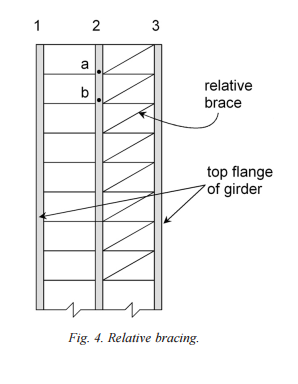UnusedHandle
Structural
I work in the crane world and commonly encounter runway girders with long spans. Many times they have deck plate that is attached to the full length of the top flange with stitch welds or bolts at even intervals. There is much debate in my office about how to account for this plate. There is a lot of "engineering judgement" to simply say that the plate provides for continuous reinforcement. However, I would like to quantify the problem. To exaggerate, if the plate were 2 inches thick attached by a continuous fillet weld to a girder spanning 15 feet, then it is simple to say that is is both strong and stiff enough to provide "continuous" bracing to the girder. However, if it were 22ga sheet, spot-welded at 4ft intervals, on a 100 ft simply supported girder, its strength and stiffness are questionable. Where is the line between obviously adequate or inadequate, and how do we quantify it? Appendix 6 of the Steel Manual provides some guidance, but not for continuous lateral bracing. In the past I have just made conservative assumptions, but now I am working on a problem where it could go either way, and the assumption will either make or break the project. Thanks in advance for any thoughts or guidance.

![[idea] [idea] [idea]](/data/assets/smilies/idea.gif)
![[r2d2] [r2d2] [r2d2]](/data/assets/smilies/r2d2.gif)
